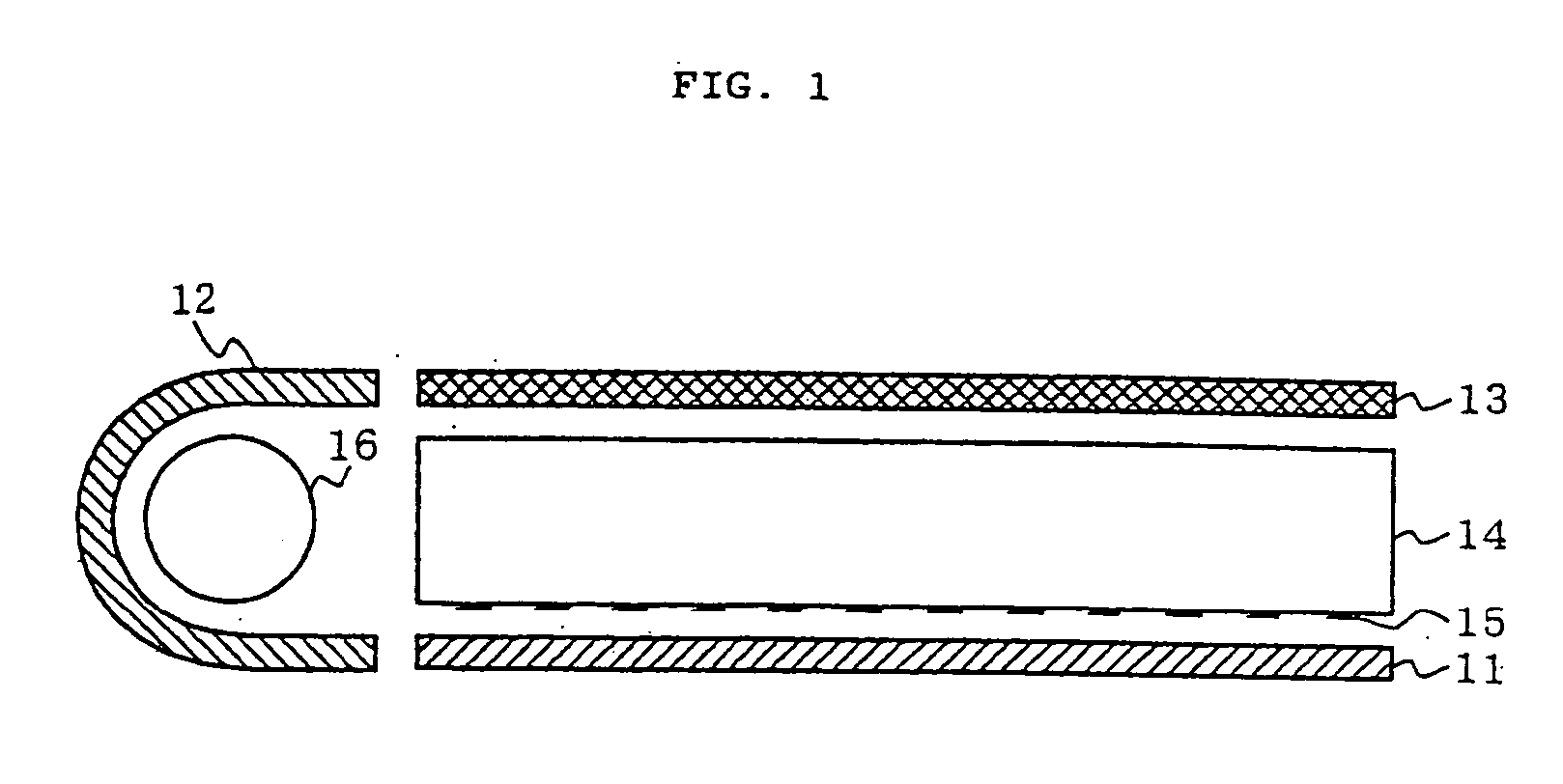White film for surface light source reflecting members
a technology of surface light source and white film, which is applied in the direction of instruments, synthetic resin layered products, mechanical instruments, etc., can solve the problems that the edge light system cannot increase the brightness of recent wide screen liquid crystal tvs, and its reflectivity is lowered, so as to reduce light loss, improve the effect of brightness and improved results
- Summary
- Abstract
- Description
- Claims
- Application Information
AI Technical Summary
Benefits of technology
Problems solved by technology
Method used
Image
Examples
example 1
[0052] Raw material mixtures mentioned below were fed into a composite film-forming device equipped with an extruder A and an extruder B.
Extruder A:
[0053] 90 parts by weight of PET chips dried in vacuum at 180° C. for 4 hours, 10 parts by weight of polymethylpentene, and 1 part by weight of polyethylene glycol having a molecular weight of 4000.
Extruder B:
[0054] 100 parts by weight of PET chips containing 15% by weight of barium sulfate particles having a mean particle size of 1 μm, and dried in vacuum at 180° C. for 4 hours, and 3 parts by weight of PET master chips containing 1% by weight of a fluorescent brightener, OB-1 (by Eastman), and dried in vacuum at 180° C. for 4 hours.
[0055] In the extruders A and B, the mixtures were separately melted and extruded out of them at 290° C. in such a manner that the melt from the extruder A could be an inner layer sandwiched between two outer layers of the melt from the extruder B, and the resulting laminate melt was extruded out thro...
examples 2 to 5
[0058] A white film was prepared in the same manner as in Example 1. The polyurethane-coated surface of the white film was coated with the same light stabilizer-containing coating liquid as in Example 1 to form thereon a coating layer having a dry thickness of 1 μm (Example 2), 3 μm (Example 3), 7 μm (Example 4), or 10 μm (Example 5). These samples were all superior to the sample of Comparative Example 1, though the durability of the samples of which the thickness of the coating layer was smaller than that of the sample of Example 1 (Examples 2 and 3) lowered in some degree and the initial brightness of the samples of which the thickness of the coating layer was larger than that of the sample of Example 1 (Examples 4 and 5) lowered in some degree.
example 6
[0059] A white film was prepared in the same manner as in Example 1. The polyurethane-coated surface of the white film was coated with a coating liquid having the composition mentioned below to form thereon a light stabilizer-containing coating layer, in the same manner as in Example 1. The thus-fabricated white film for a reflecting structure for surface light sources was yellowed little in the durability test, and its mean reflectance reduction and brightness reduction were small, as in Table 1.
[0060] (Coating Liquid for Forming Coating Layer)
U-Double UV714 (40% solution by Nippon Shokubai)10.0 gSumidule N3200 (curing agent, by Sumitomo-Bayer Urethane) 0.5 gEthyl acetate / toluene (1 / 1 by weight)12.0 g[Examples 7, 8, 9]
[0061] A white film was prepared in the same manner as in Example 6. The polyurethane-coated surface of the white film was coated with a coating liquid that had been prepared by mixing 20.0 g of the coating liquid in Example 1 with 0.13 g (solid content, 3% by weig...
PUM
| Property | Measurement | Unit |
|---|---|---|
| reflectance | aaaaa | aaaaa |
| particle size | aaaaa | aaaaa |
| particle size | aaaaa | aaaaa |
Abstract
Description
Claims
Application Information
 Login to View More
Login to View More - R&D
- Intellectual Property
- Life Sciences
- Materials
- Tech Scout
- Unparalleled Data Quality
- Higher Quality Content
- 60% Fewer Hallucinations
Browse by: Latest US Patents, China's latest patents, Technical Efficacy Thesaurus, Application Domain, Technology Topic, Popular Technical Reports.
© 2025 PatSnap. All rights reserved.Legal|Privacy policy|Modern Slavery Act Transparency Statement|Sitemap|About US| Contact US: help@patsnap.com

